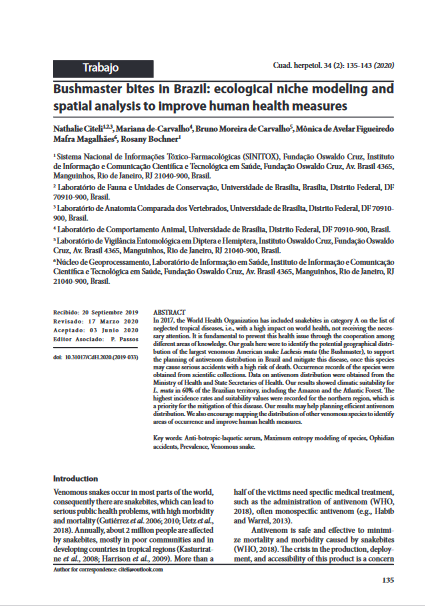Bushmaster bites in Brazil: ecological niche modeling and spatial analysis to improve human health measures
Licencia: Creative Commons (by-nc)
Autor(es): Citeli, Nathalie; [et al.]
In 2017, the World Health Organization has included snakebites in category A on the list of neglected tropical diseases, i.e., with a high impact on world health, not receiving the necessary attention. It is fundamental to prevent this health issue through the cooperation among different areas of knowledge. Our goals here were to identify the potential geographical distribution of the largest venomous American snake Lachesis muta (the Bushmaster), to support the planning of antivenom distribution in Brazil and mitigate this disease, once this species may cause serious accidents with a high risk of death. Occurrence records of the species were obtained from scientific collections. Data on antivenom distribution were obtained from the Ministry of Health and State Secretaries of Health. Our results showed climatic suitability for L. muta in 60% of the Brazilian territory, including the Amazon and the Atlantic Forest. The highest incidence rates and suitability values were recorded for the northern region, which is a priority for the mitigation of this disease. Our results may help planning efficient antivenom distribution. We also encourage mapping the distribution of other venomous species to identify areas of occurrence and improve human health measures.
[2020]
Compartir:
Una vez que el usuario haya visto al menos un documento, este fragmento será visible.


